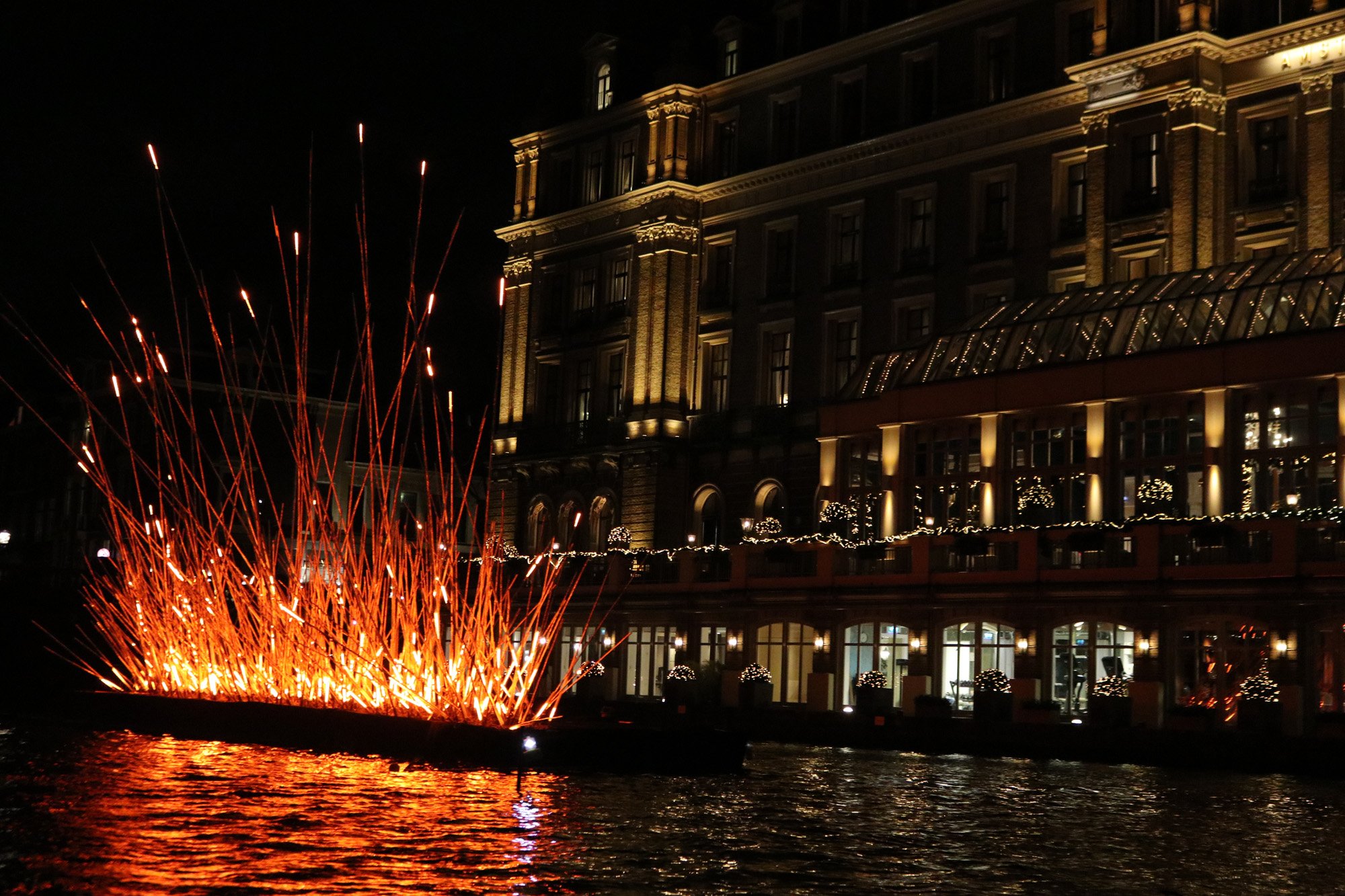Expat Chronicles: Energy Bills and Efficiency
Well, that’s one sexy title. Doesn’t everyone want to read about energy efficiency on a quilting blog? Actually we’ve been busy in this area after buying an older home. Still I would have never thought to write about it until a reader suggested it, and she was right! Heating, cooling, electricity, gas - these things are definitely different in our new life in The Netherlands.
Energy Costs + Billing
Living spaces are smaller in The Netherlands as compared to the USA, thus energy bills are too. Homes often use natural gas for heating (and maybe cooking) and electricity for the rest, all billed together from one energy provider. And, yes, much of the electricity is from renewable sources - like these modern Dutch windmills.
image via Unsplash
I love the steady monthly billing style! You pay the same amount each month, based on estimated usage. At the end of the year, the energy company compares your actual usage to the estimate, then sends you a bill or refund to even the score. Oh, and you can change the monthly payment if you think the estimate is off, so you’re still in control. A steady monthly bill makes budgeting so much easier.
Our last house was 115 square meters of living space, built in the 80’s. There our monthly energy bill (gas + electricty) was €180.
Not happy with your energy provider? There are lots to choose from. This is another case where the Netherlands offers more market competition than is typical in America. Switching between energy providers is common, as you might save money, and it’s super easy to do.
Cooling
AC, what’s that? No really, there is air conditioning in The Netherlands in many (but not all) business buildings. Few residences have it, but it’s getting more popular every year due to rising summer temperatures. Keep in mind that July and August are likely the only months that you’d use AC.
Dutch people cool their homes by opening windows during cool hours and closing curtains/shutters during warm hours. Shutting out natural light does make a huge difference during a heat wave. It’s a must when temps rise, but I dread it. I rarely use artificial light during the day, and find a closed house with artificial light so depressing. They say the answer is to go outside in the shade!
We will be hanging a summer shade cloth in our backyard for exactly this purpose, over this nook right outside our kitchen/dining area. The cloth will also block the sun from entering our house through the dining room French doors, reducing heat build up during the summer months.
Heating
Heating is the real workhorse in The Netherlands, as you might have use of it from October through May. Most homes have a water boiler in the attic that provides hot water for faucets, showers and for the radiators that heat rooms.
Apparently radiators are totally normal in parts of the USA, but my husband and I had zero experience with them from our lives in California and South Carolina. Radiators don’t require ductwork or vents, but the water has to travel around the house in pipes, most of which are exposed. I painted pipes right along with walls to help them blend into our home. This living room radiator is fairly low-profile, as it’s tucked under the generous windowsill.
Radiators are cozy, like a gentle fire, but there’s something even better - underfloor heating. By running hot water or electricity under wood or tile floors, you can heat a room in an invisible and perfectly delightful way that’s even energy efficient. Both of our Dutch homes have had underfloor heating in the kitchen, and oh do my feet love it! If we ever remodel our bathroom, adding underfloor heating is a must.
Updating for Energy Efficiency
About half of Dutch buildings were built before the year 1980. Many homes can benefit from updates to improve energy efficiency. Encouraging investment in energy efficiency is a national goal supported by significant subsidies for adding insulation or solar panels to your home.
Our current home was built in 1937, at a time when buildings weren’t insulated at all and windows were all single pane. Over time many windows have been changed to double pane glass and the attic was insulated when it was finished more than 20 years ago. Still, there is a lot to do to make it an energy efficient home.
In April we had wall insulation added to the exterior walls of our home. They drilled small holes in the mortar between bricks and blew insulation into the gap between the outer bricks and the inner wall. Can you spot the reddish hose entering the lower left wall? The work was completed in one day and not at all disruptive.
Our first windows were changed just yesterday - in my sewing room! New HR++ window glass was placed into the original wooden frames of the house. Now they are many times more energy efficient than the old windows, and the new glass will also protect my fabrics and quilts from fading.
The wall insulation and new glass were the only energy measures that we had planned when we purchased our home, but we were blown away by our first energy bill. It showed that the cost of our actual gas usage in March was €348. This is more than double what they estimate for a home of our size and type. Aye yai yai!
We’ve made a bunch of small changes since then. For one, we set the temperature one degree lower during the day and a lot lower at night. My husband scurried around adding weather stripping to windows and doors. He insulated a drafty wall area in the laundry room and put a cap on our kitchen extractor hood vent so that it won’t allow cold air to blow into the kitchen. Small changes add up, as our April gas usage totaled €218, even during the coldest April in 35 years.
We’ll be saving up for more energy improvements in future years, like adding roof insulation to our kitchen/laundry rooms. It would be awesome to add solar panels to our home someday, which are fairly common here. You can spy a few on my neighbor’s roofs. But, first things first!















